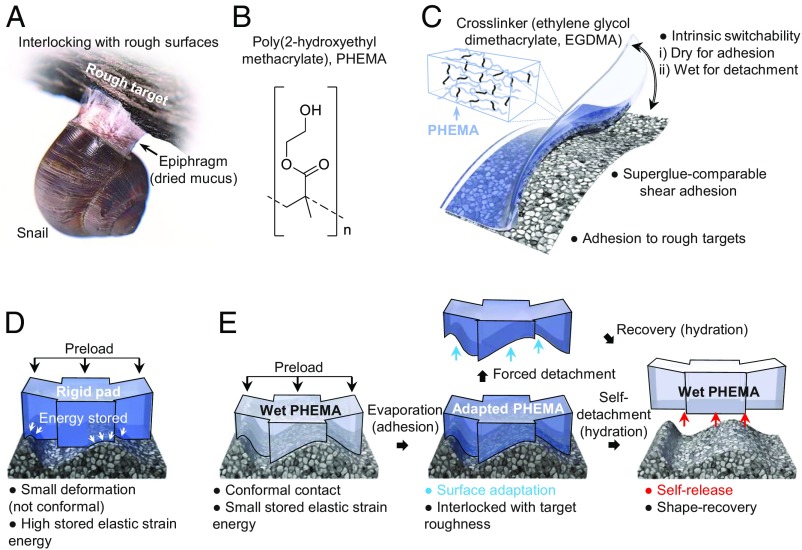Fig. 1.
Design of PHEMA hydrogel superglues. (A) Illustration of epiphragm of snails, where the drying mucus facilitates its attachment to a rough surface. (B) Chemical structure of PHEMA. (C) Illustration of the major advantages of PHEMA hydrogel adhesives in overcoming challenges posed by liquid and dry adhesives. (D) Illustration of the challenge in making conformal contact between a solid adhesive that has a high modulus and a rough target surface. (E) Proposed epiphragm-like adhesion mechanism with a PHEMA gel, where shape conformability in the wet state followed by interlocking upon drying facilitates adhesion. The deformed configuration of the hydrogel can be retained after drying and forced detachment (shown by the blue arrows). Upon rehydration, the wet hydrogel adhesive pad returns to its original undeformed configuration and can be easily self-detached from the target substrate (shown by the red arrows).

